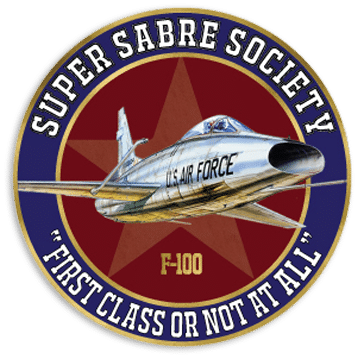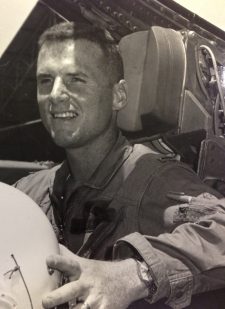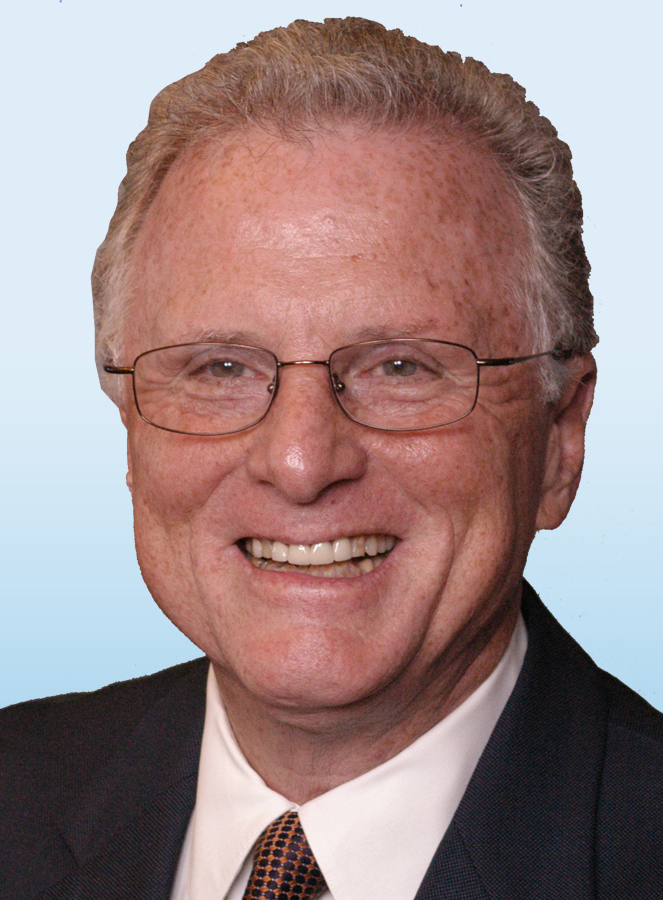I enlisted in the USAF in May 1966. In Vietnam, I flew 257 combat missions. I never talk about Vietnam without paying tribute to Bob Scott and Lee Ghourley, two of my roommates at Phu Cat who gave their lives.
After returning from Vietnam I became an instructor in pilot training at Reese AFB in Lubbock, TX, and was then assigned to Pilot Instructor Training (PIT) at Randolph AFB in San Antonio, TX. At Reese and at Randolph, I was the T-37 pilot assigned to develop training films of all the maneuvers students did in pilot training. These films were used in learning centers in the pilot training bases for a number of years. I decided to leave the Air Force in 1972 after completing my 6 years of service and still look back on those times as some of the absolute best in my life.
My Best Flying Story
One day in the late afternoon, I was scrambled on a mission with another pilot who was pulling alert duty with me. We had been in the alert shack playing ping pong with our two crew chiefs when the phone rang, and the voice said “Scramble Elect 21″. (I am not totally sure that Elect 21 was our call sign, but it was something like that.) We ran to our planes sitting on the alert pad cocked and ready. Our crew chiefs ran with us, helped us strap into the cockpit, gave us the sign to fire up the engines, pulled the chocks, and gave us a salute to taxi.
As my engine came up to speed, I called out ” Elect 21, Check-In”. Immediately, my number 2 called back. “Two”. Combat missions require extreme teamwork and concentration. Checking in crisply like that is the first indication that both pilots are ready for the mission and concentrating on the task. I am glad that no one was there to check my blood pressure, because this is the time when you start to breathe quickly, and your pulse rate goes up. It is an intense moment knowing where you are going and what you will likely encounter. Alert missions always involved an emergency call from the ground troops needing air support.
As we began to taxi out, I called the tower to get our instructions. I was the flight lead and our job was to get over a special forces camp as fast as we could. They were under attack and in danger of being overrun. We were each carrying 2 cans of napalm on the outboard stores, and 2 – 250 lb. high drag bombs inboard. Both of these weapons were designed to be dropped at a very low altitude in a 20-degree dive angle at 450 knots of airspeed. They were deadly weapons when dropped on troops. Each of us was also armed with 750 rounds of 20 mm HEI (high explosive incendiary) loaded into two machine guns coming out from underneath the nose of our planes.
We taxied out to the arming area where the pins were pulled, the guns were armed hot, and we were cleared for immediate takeoff.
We taxied into position, hit the afterburner, and screamed off the runway to make contact with the FAC (Forward Air Controller) who would be directing the airstrikes over and around the camp. Normally, when we lifted off, we would come out of afterburner, but in this case, we left the burners on producing significant extra thrust. There were two benefits to this: 1) We could get to the target area quickly, and 2) By the time we got there, our outboard fuel tanks would be dry allowing us to commence our bombing runs immediately. We accelerated to top speed which would have been close to 500 knots.
As we arrived over the camp and checked in with the FAC, we could hear in his voice the urgent situation he was dealing with. We could not hear the ground troops, but we could hear the FAC who was talking to the ground troops (who were screaming at him to get the air support coming in). As the FAC directed, we dropped the napalm, and then the 250 lb high drag bombs.
As we were preparing to begin our strafing runs, the FAC screamed over the radio, “Can you see the foxhole at the northeast corner of the camp?”. I responded that we had it in sight, and the FAC stated that they were getting overrun. We needed to strafe all around the foxhole. It was chilling to hear him say that we did not need to worry about getting too close or even hitting one of the men in the hole as they were in a life and death battle. The main issue was to strafe as close to the foxhole as possible and as quickly as we could.
I will never forget what I saw as I flew over the foxhole on my first pass. To be as accurate as I could, I got down as low as possible, fired both guns at the same time, and walked the 20 mm around the hole. (You could walk the fire using the rudders). 20 mm HEI (munitions) actually light up as they hit their target or the ground, so this was a totally visual pass. I didn’t pay particular attention to the airspeed indicator or any instruments in the cockpit for that matter; the idea was to get as much fire around that foxhole as we could. I don’t think any of my rounds actually went inside the foxhole, but as I went over, I could see the back of the flak jackets of the men in the hole. They were getting as low as they could, bending over with their arms over their heads while we strafed.
I saw the rounds hitting the ground all around the hole, and Number Two could see the same thing. We came back around for more passes until our guns were empty, then we pulled off, checked out with the FAC and headed back to our base at Phu Cat. The FAC seemed pleased with what we did, but as we left the scene, you could hear him working with the next flight of F-100’s coming in after us. There were several other flights stacked above waiting their turn to come down and get in the fight. His work was not over.
I went back to Phu Cat still thinking about those men in the foxhole and wondering if they survived. We landed at Phu Cat, debriefed intelligence, took a shower, ate dinner in the officer’s club, and slept in clean sheets. Those men, if they survived, spent the night in that foxhole on the edge of that camp in the jungle doing what their country called them to do. The sight of those men bent over with their arms over their heads protected only by their flak jackets is still vivid in my mind’s eye. I hope they survived.
After my Air Force days, I came to Houston, TX, and entered the commercial real estate business. From 1981 to 2008 I operated my own company, MSC Properties, Inc, and I am currently with the firm of Colliers International in Houston specializing in commercial and retail real estate. Generally, I represent tenants or buyers, but occasionally, I am on the side of the seller or owner. This December 2018, my wife and I will have been married 39 years and have three children and two grandchildren.





